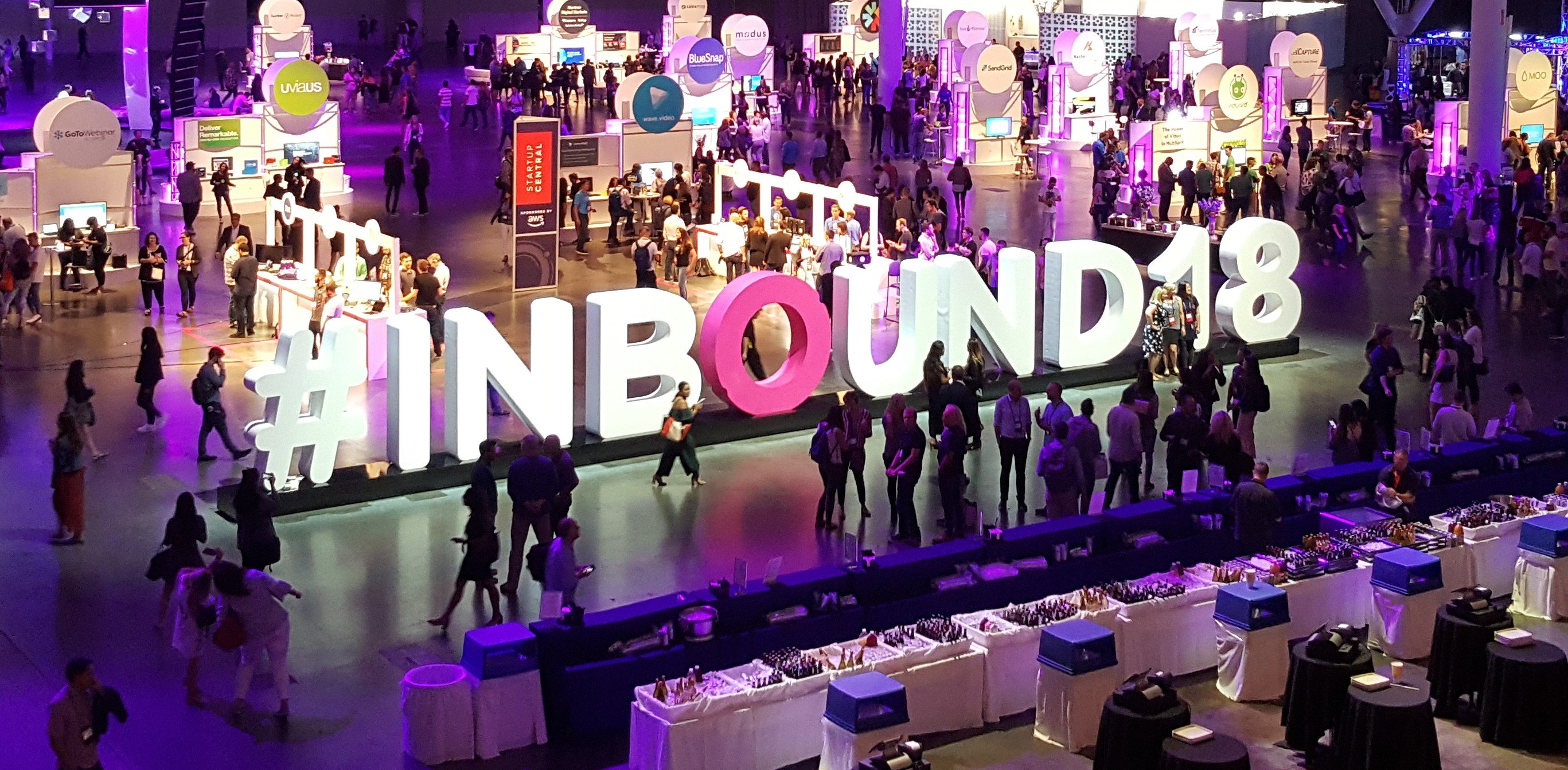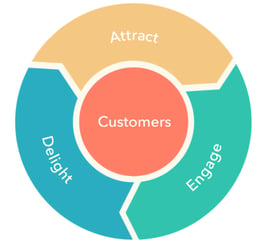
More than 24,000 marketers attended HubSpot’s INBOUND conference a couple of weeks ago in Boston. INBOUND is one of the biggest conferences in marketing and among this year’s audience were members of WunderLand’s own Advanced Group marketing team. We asked our marketing experts what their key takeaways were from this year’s show.
#1 - The Customer Journey is Not a Linear Funnel
For years, HubSpot’s inbound methodology has focused on a pretty linear, 4 step journey (Attract – Convert – Close – Delight). A major theme at INBOUND 18 was the next evolution of the Inbound model: The Flywheel.

The Flywheel represents a more sophisticated, friction-less integrated approach to business growth where Attract, Engage, Delight surround the customer, the core to everything:
Customers’ buying behaviors are evolving and they rely more on trust and word-of-mouth vs marketing and sales touches. HubSpot shared that 81% of customers trust opinions from their friends and family members over advice from companies. 55% of customers don’t trust companies they buy from as much as they used to.
We already see this movement towards customer experience and reducing friction in the B2C world. A simple example: how we buy a car today is radically different from how we bought a car ten years ago. The B2B world has some work to do, however, and Brian Halligan, HubSpot CEO, sums it up nicely: “It used to be what you sold that mattered, but now it's how you sell. There is a big opportunity for companies to take advantage of this.”
#2 – You’re Marketing to Real People
Another key theme at INBOUND was Conversation Marketing, where we nurture 1-1 relationships with customers through real-life engagement, listening to their feedback, and acting on it. Martech, salestech, big data are all still important, but nothing replaces actual conversations and listening. We heard speakers say things like, “when did not talking to our customers become a goal?” or “we have an over-emphasis on scale.” Speakers shared that customers WANT to talk face-to-face these days, but they want to do it on their own terms (e.g. live chat).
We also heard a lot about martech and the dizzying array of alternatives that are available. With so many options on the market, it’s important to remember two things: 1) technology should support your strategy, it doesn’t become the strategy. Also, technology will not fix your strategy if it is broken. 2) be cautious of losing connection to your customer. At some point, technology can potentially make us less connected.
Getting back to The Flywheel, you have to ask yourself how your martech/sales tech stack is helping you put the customer experience at the center of your growth strategy. Finally, with the customer experience core to your success, marketing and sales have to be seamlessly integrated and working together at all stages. Marketing doesn’t stop after customer acquisition, and marketing should be involved in customer experience strategy right from the start.
#3 - The Customer Code: How to Really Put the Customer at the Center
As HubSpot says, “Customers are more independent, more impatient, and less trusting of businesses. They share their dissatisfaction widely and loudly, and they can easily choose one of your many competitors. But they’re also your greatest source of growth. And yet many businesses, while they say they are customer-first, are actually customer … eventually. The Customer Code outlines a shared set of principles and beliefs on how to build a company that customers love. It’s not about what you sell, but how you sell.”
Our goal has to be to solve for the customer. We’re often focused on customer satisfaction, but how many companies strive for customer delight? HubSpot developed a report card and some of our favorite points include:
Putting your customer at the center needs to be a team sport. According to HubSpot, only 46% of companies say that their sales and marketing functions are aligned. They also reported that 80% of content created by marketing is completely untouched by sales because either a) sales doesn’t see value in the content, or b) marketing doesn’t make it easy to use.
Our brains are buzzing after attending INBOUND 18. Whether or not you’re a HubSpot customer, this conference brings together some of the best modern marketers and it gives us plenty of food for thought each year. We’ll be talking a lot about how we can apply The Flywheel to our business practices, and we look forward to next year.
Did you attend INBOUND 18? What did you think?

WunderLand Group is your go-to partner for marketing, creative, digital and sales enablement service, and the employer of choice for creative and digital specialists.
© 2023 WunderLand Group